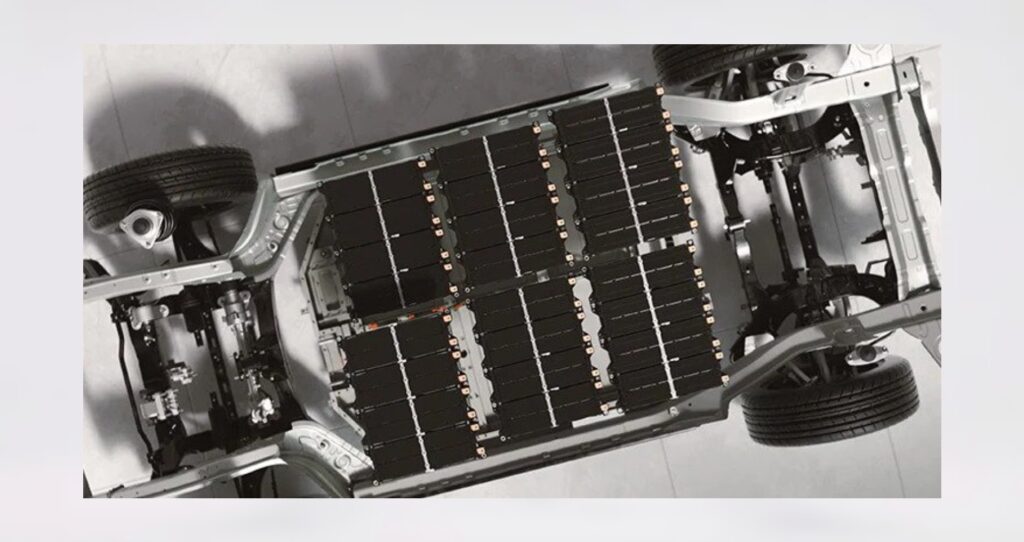It enables electric cars to have an improved range, higher performance, and higher charging capacity: with the development of the Electric Global Modular Platform, or E-GMP for short, a new era in the company’s history begins for Hyundai. The new vehicle architecture was developed exclusively by Hyundai and serves as a substructure for the electric cars from the Hyundai sub-brand Ioniq.
This new generation of electric Hyundai cars benefits from significant improvements in the development process: future battery-electric vehicles can be designed and constructed more flexibly to meet different customer requirements. In addition, customers benefit from an improved range and, thanks to 800-volt technology, from a very fast charging capacity, according to Hyundai in a recent press release.
The development of the platform began on a blank sheet of paper and offers unprecedented freedom in terms of vehicle design. Thanks to it, the Hyundai Designer can design electric vehicles with different drive systems without having to compromise on the space available in the interior.
Extremely fast charging: 100 kilometers in five minutes
One of the greatest advantages of the E-GMP is its ability to charge quickly. At a 350-kilowatt charging station, the battery can be charged from ten to 80 percent in just 18 minutes using 800-volt technology. In comparison, a vehicle equipped with 400-volt technology would take around twice as long for the same charging process. “Reloading” for a range of 100 kilometers according to WLTP is already completed after five minutes.
The system allows charging at 800-volt and 400-volt charging stations without the need for additional components or adapters. This multi-charging system is a technology developed and patented by Hyundai for high charging compatibility. Thanks to a boost converter, the rear electric motor, and the inverter can internally convert a 400-volt charge into 800 volts before the electricity reaches the batteries. This system gives customers the benefits of 800-volt fast-charging regardless of the actual voltage of the charger.

Hyundai Ioniq 5 offers bidirectional charging capability
With the innovative Vehicle-to-Load (V2L) function, every Hyundai electric car with E-GMP has the option of bidirectional charging. The high-voltage battery can act as a power bank and supply external electrical devices such as e-bikes, e-scooters, or notebooks with a maximum output of 3.68 kilowatts while driving or when stationary with up to 230 V alternating current. In the interior, a household socket is attached to the rear seat bench for this purpose. To use the function on the outside, an adapter is included. This means that the new Hyundai Ioniq 5 can also provide breakdown assistance and charge other electric cars.
The heart of the E-GMP architecture is a large, high-capacity battery pack housed flat in the vehicle floor, which enables the Ioniq 5 to range up to 485 kilometers according to WLTP.
Repair-friendly construction of the battery pack
The large battery pack is located between the axles, which are far apart, and deep in the middle of the platform, which results in a low center of gravity for the vehicle. This construction not only has a positive effect on cornering, acceleration and driving stability. Thanks to an optimal axle load distribution, it also improves the handling of the vehicle. The five-link rear wheel suspension handles longitudinal, transverse and vertical forces equally well, and the innovative, integrated drive axles – they function as drive shaft and wheel bearings at the same time – transmit the power of the rear electric motor directly to the wheels.
Compared to a solution with separate parts, the integrated drive axle is 42 percent stiffer and ten percent lighter, which, according to Hyundai, further improves handling and driving behavior.
By using standardized battery cells and modules within a large unit, E-GMP enables only individual modules to be replaced or revised in the event of repairs. This lowers repair costs for customers and minimizes the financial risk when purchasing a vehicle.
More legroom and flexibility in the interior
The new platform also completely redefines the proportions of electrically powered vehicles. The flat battery pack ensures a consistently level floor in the interior.
For the vehicle occupants, a long wheelbase and a flat vehicle floor mean more legroom, thus more comfort on long journeys and at the same time more freedom of movement in the vehicle. The front and rear seats, as well as the sliding center console, can be flexibly adjusted. With the generous dimensions of the interior, the designers also have more freedom to design the vehicle interior in an innovative and spacious manner. Instead of submitting to conventional design principles, you can transform the interior of the vehicle into a new living space.
Identical space conditions with rear-wheel and all-wheel drive
With the E-GMP, Hyundai engineers have created a flexible and modular platform, the basis of which can be used for various vehicle segments. Areas such as side skirts, rear carriers or the wheelhouses can be modified variably within the platform so that they can be adapted for different vehicle classes and enable a range of new, attractive vehicle designs. Central areas such as shock-absorbing elements, the wheel suspensions and the battery housing are fixed in the platform. This guarantees safe, comfortable use and optimal protection for passengers and battery.
The new electric platform is designed for rear-wheel drive as standard. It can also be upgraded to all-wheel drive with an additional motor as in the Hyundai Ioniq 5. The space available in the interior is independent of the drive variant.
By eliminating the internal combustion engine, the front overhang could be shortened. The bonnet is sloping and parts of the air conditioning and heating system are now where the gasoline or diesel engine would otherwise be found. This creates more space, which enables a clearer cockpit design. The design of the dashboard in E-GMP vehicles offers the driver and front passenger a spacious, modern and comfortable ambience. The Ioniq 5 offers additional storage space under the bonnet (Frunk) with a capacity of up to 57 liters for smaller pieces of luggage or devices.
More safety for occupants
The body structure of the new platform increases safety for occupants. In the event of a collision, special collision frames at the front and rear absorb the impact energy and divert it to the outside around the battery pack. The front collision frame fulfills this task particularly effectively thanks to a multi-skeleton-like structure.
In the new platform, the battery is particularly protected by a special body structure in the floor area made of ultra-high-strength steel. Here, in the event of a potential side impact, extruded aluminum reinforcements absorb a large part of the energy introduced.
The Ioniq 5 and its “universal island”
The Hyundai Ioniq 5 is the first battery-electric vehicle based on E-GMP and also the first of the new Ioniq sub-brand. According to the manufacturer, the E-CUV reflects the many advantages of the new platform.
The innovative center console in the Ioniq 5, for example, functions as a multifunctional island. It can be pushed back by up to 140 millimeters. In combination with the flat floor of the vehicle, this movable island enables the occupants to get on and off flexibly, more freedom of movement and a high level of comfort. For the passengers in the rear, the universal island offers easy access to a wireless charging option with up to 15 watts for mobile phones and USB connections.
The particularly flexibly adjustable and heated front seats with relax function and fold-out leg rests can be adjusted at an ergonomically optimal angle, for example to rest during a charging process. The passengers in the second row also benefit from the innovative design of the front seats, in which Hyundai has reduced the volume of the backrests by 30 percent compared to comparable designs. The space gained in this way benefits the legroom of the rear passengers.
Hyundai sees E-GMP as a milestone for the electric car era
With the new E-GMP architecture, Hyundai says it has enormous potential for the successful development and marketing of future vehicles. It is part of the strategy of the South Korean brand to become one of the leading manufacturers of electric cars. Over the next five years, the Hyundai Motor Group plans to bring a total of 23 electrified models onto the market, eleven of which are purely electric cars such as the Ioniq 5, Ioniq 6, and Ioniq 7. The goal is to sell more than a million electric cars worldwide by 2025.



